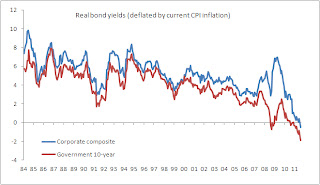During the 1990s, inflation targeting emerged as the dominant monetary policy framework. With inflation subsequently declining and remaining amazingly stable, the majority of economists heralded this framework as a phenomenal success. Even after the oil price shocks of the mid-2000s, which pushed headline inflation rates higher, there were few signs of any ‘second-round’ effects on wages and core inflation. Proponents of these policies claimed inflation targets had helped anchor inflation expectations and, in doing so, increased the efficacy of demand management through monetary policy.
Still, others doubted the contribution policymakers were really making. In particular, some economists pointed out that even those central banks that didn’t have formal inflation targets – notably the Federal Reserve – had also enjoyed a lengthy period of low and stable inflation. This was because the OECD economies had benefitted from several favourable supply-side shocks – notably globalization – that kept inflation down and compressed overall macroeconomic volatility. Some critics also worried that formal inflation targets might reduce central banks’ ability to react to unfavourable demand shocks. This criticism was most forceful in the early stages of the 2007-09 financial crisis, when the inflation-targeting European central banks seemed to react more slowly to the subsequent downturn than the Federal Reserve. (The ECB even raised rates at first.)
In a paper earlier this week, Kuttner and Posen assess these criticisms by comparing the performance of the Bank of England to the Fed. They find that while there is some evidence inflation expectations are stickier in the UK – suggesting a positive effect from the explicit inflation target - the impact is not especially large. This offers some support then, for those FOMC members who resisted pressure to announce a explicit inflation target. Still, perhaps as significant, Kuttner and Posen also find little evidence that the inflation target reduced the BoE’s policy flexibility relative to the Federal Reserve.
Overall, though, these results are unsurprising – for two reasons. First, though the Fed hasn’t had a formal inflation target over the past two decades, it has had an informal target. Investors and market commentators have known what level of inflation the Fed prefers and even which measure of inflation it likes to base this on (1-2% on the core PCE deflator). Second, the MPC targets a forecast for inflation, not the current level of inflation. Because current and expected levels of demand have a critical influence on these forecasts, it seems obvious the MPC should be just as responsive to growth developments as is the Federal Reserve. In short, the inflation forecast provides the MPC with significant flexibility.
Finally, it is important to highlight a major political-economy difference between the Fed and the BoE, which this paper largely misses. In the mid-1990s, the Fed had a long history of price stability and had built up considerable credibly in financial markets. In contrast, the UK adopted an inflation target only after the UK had calamitously dropped out of the ERM in 1992. Its monetary policy framework was in tatters. So while the Fed didn’t need an explicit inflation target to establish its credibly, the Bank of England certainly did.



